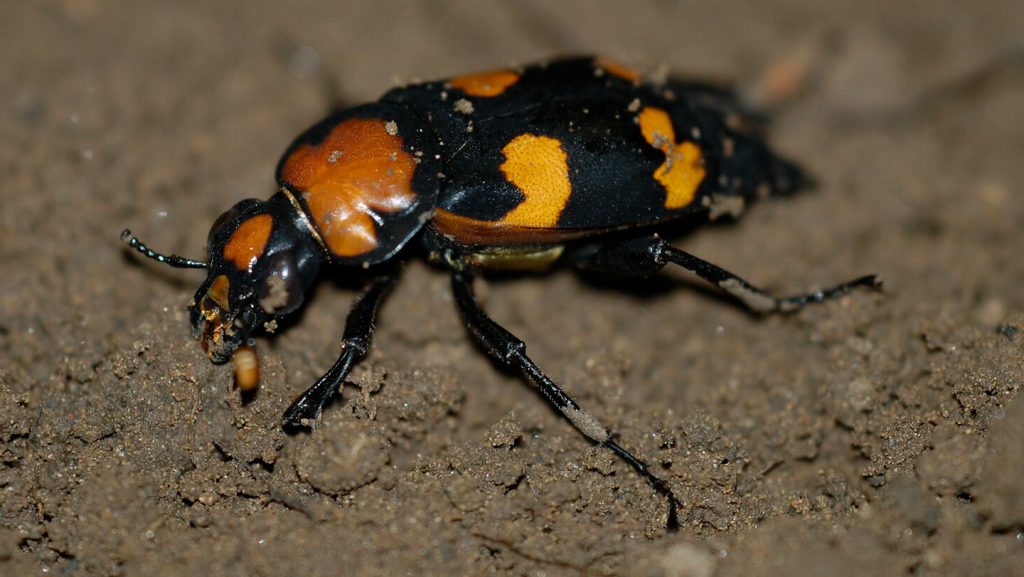The American burying beetle, once abundant across North America, has faced a decline in populations due to habitat loss and disappearing wildlife species, which has left the beetle now only found in small pockets in 10 states. However, recent data shows an increase in the beetle’s abundance over the last decade in southwestern Nebraska’s Loess Canyons, marking the first regional increase since the beetle was listed under the Endangered Species Act in 1989.
Research ecologist Caleb Roberts emphasizes that the resurgence of the American burying beetle in the Loess Canyons is a significant conservation success story, highlighting the positive impact on the grassland ecosystem as a whole. These beetles play a vital role in cleaning up dead bodies by burying carcasses and embalming them with their secreted fluids to feed themselves and their offspring, providing a natural service to the ecosystem.
While the beetles are not selective about the type of carcasses they consume, they are particular about the size, needing a carcass weighing 100 to 200 grams to feed their larvae. However, suitable bodies have been in decline due to the disappearance of animals like passenger pigeons, prairie dogs, and bobwhites that perfectly fit the beetle’s dietary requirements, as well as changes in habitat like the conversion of grasslands to croplands or tree invasion.
Studies conducted by the Nebraska Game and Parks Commission revealed that the beetle population in the Loess Canyons increased by 17% over twelve years, with a total population rising from 168 to 196 individuals. Models showed that the beetles thrived in Nebraska’s native grasslands devoid of eastern red cedar trees, and tree cover exceeding certain thresholds dramatically reduced beetle abundance.
The resurgence of American burying beetles in the Loess Canyons is attributed to the efforts of over 100 private landowners who reintroduced prescribed fires and controlled red cedar invasion in partnership with conservation organizations. By reducing tree cover and restoring native grasslands, the diverse prairie habitat has benefited a range of wildlife species, including the beetles, by providing more food options and suitable living conditions.
Ultimately, the success story of the American burying beetle in the Loess Canyons showcases the critical role that active habitat management and restoration efforts can play in the conservation of endangered species and the preservation of biodiversity. The collaboration between private landowners and conservation organizations has proven to be effective in revitalizing ecosystems and supporting the recovery of threatened species like the American burying beetle.


